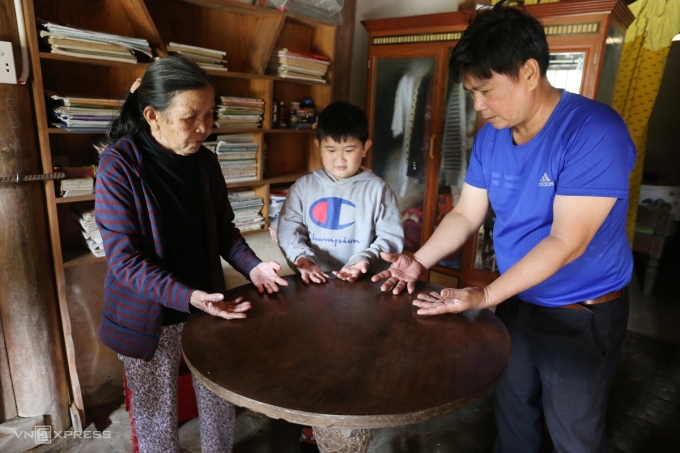Edition: International | Vietnamese
© Copyright 1997 VnExpress.net. All rights reserved.
 |
|
The village, located in Tien Canh Commune, the central province's Tien Phuoc District, was established between the 15th and 16th century with a total seven generations living in harmony. |
 |
|
Around the old house complex are fruit trees that not only produce a variety of fruits but provide ample shade for the dwellings. |
 |
|
There are eight old houses left in Loc Yen, built 80 to 150 years ago. Their structures are typical of a house called "nha ruong", made of solid jackfruit wood pillars and beams. Their cultural value is critically acclaimed and deemed worthy of preservation. |
 |
|
The well-preserved interior of 82-year-old Dong Viet Mao’s home. |
 |
|
A pumpkin-shaped rafter carving in the middle of Mao’s house signifies prosperity. All carvings and reliefs were skillfully produced by craftsmen from Van Ha carpentry village, Tam Thanh Commune of neighboring Phu Ninh District. |
 |
|
A mysterious "auto rotating" table made by Van Ha Village carpenters. |
 |
|
Stone stairs leading to an old house appear wet and slippery in the rain but create a nostalgic feel and smell induced by a green moss layer. |
 |
|
Large stone-paved steps with tea fences and fruit tree gardens on both sides. |
 |
|
Stone footpaths skirting lush green paddy fields are ideal for a pleasure walk. |
 |
|
In 2017, Quang Nam People’s Committee approved Tien Phuoc‘s ecotourism development, with plain concrete roads now decorated with stone fences and colorful petite flowers. |
 |
|
Bon bon fruit trees, which are native to Southeast Asia can be seen in almost every garden here. The fruit turns ripe in the eighth lunar month with a translucent sweet flesh under its skin. |
 |
|
This type of fruit belongs to the same family as bon bon fruit, except that it turns red when ripe. |